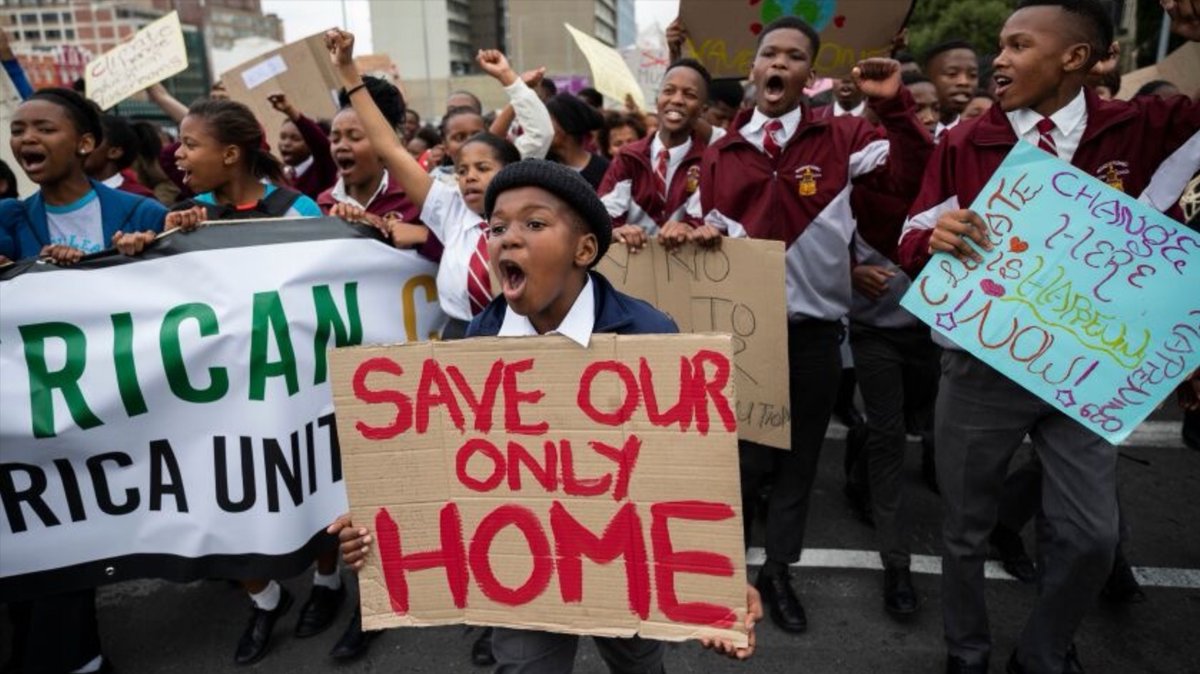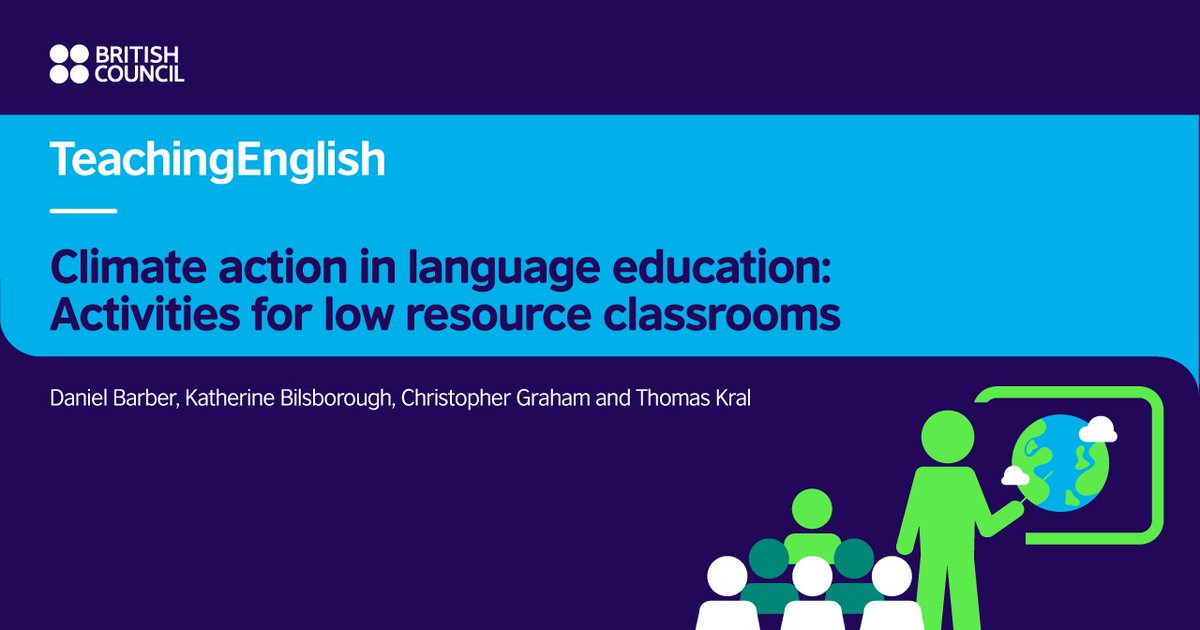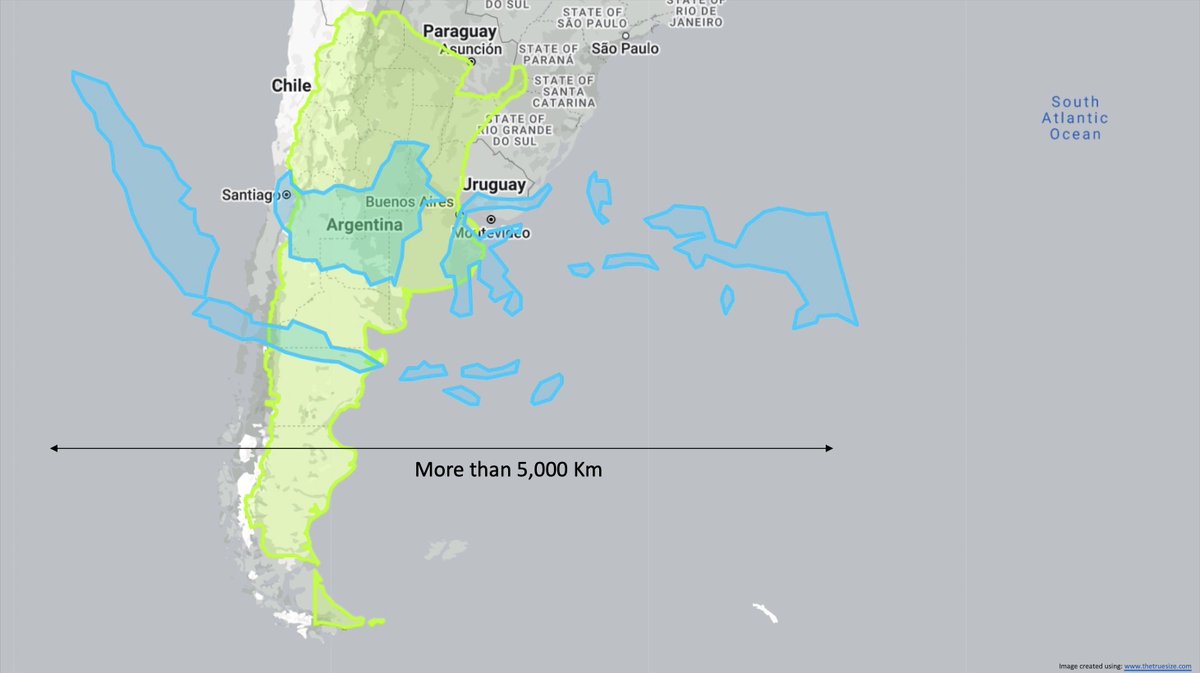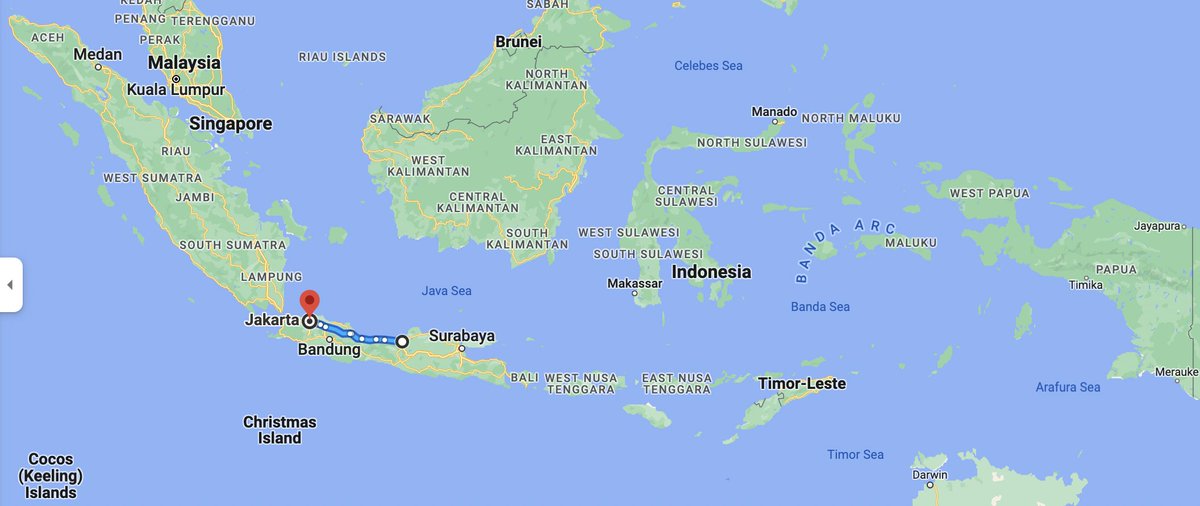
HOW ENGLISH LANGUAGE TEACHERS (ELT) CAN RESPOND TO THE CLIMATE CRISIS. 1/50
— a thread 🧵 about climate change education
— a thread 🧵 for all teachers, but esp English teachers
— a thread 🧵 about why, how and what next
#ClimateAction #ELT #GreenActionELT
— a thread 🧵 about climate change education
— a thread 🧵 for all teachers, but esp English teachers
— a thread 🧵 about why, how and what next
#ClimateAction #ELT #GreenActionELT

The Climate Crisis poses No 1 threat to the world.
Respondents to the 2022 @wef Global Risks Perception Survey ranked ‘Climate action failure’ as the number one risk with potentially the most severe impact over the next decade. 2/50
➡️ bit.ly/3X3HQ1Z
Respondents to the 2022 @wef Global Risks Perception Survey ranked ‘Climate action failure’ as the number one risk with potentially the most severe impact over the next decade. 2/50
➡️ bit.ly/3X3HQ1Z

Calls to “Build Back Better” with an emphasis on mitigating the damage to the environment, including concrete action on climate change education are growing louder. 3/50 @UNESCO
➡️ bit.ly/3tqNu0D
➡️ bit.ly/3tqNu0D

Here's a quote from former UK Secretary of State for Education, @nadhimzahawi in the UK's Policy Paper: Sustainability and climate change: a strategy for the education and children’s services systems. 4/50
➡️ bit.ly/3hGfRW7
➡️ bit.ly/3hGfRW7

A report by the Education Outcomes Fund (EOF) ‘Education for Climate Action. Why education is critical for climate progress’ identifies three primary areas where education can play a major role addressing the climate crisis. 5/50
➡️ bit.ly/3GfJ0BE

➡️ bit.ly/3GfJ0BE


@TransformingEdu Summit (2022) the UN rallied world leaders to achieve the global objective of quality education for all by 2030, while adapting education systems to tackle the main challenges of the century through peace education, climate education and digital education. 6/50 

However, despite high-level international agreements education specialists report that Climate Change Education remains one of the least implemented aspects. 7/50
➡️ "Should schools teach climate change studies? These countries think so" bit.ly/3X1JRMk
➡️ "Should schools teach climate change studies? These countries think so" bit.ly/3X1JRMk

In her paper for @norrag special edition @CKwauk argues that the 'bare minimum’ target for policy makers and advocates must be the mandatory teaching of climate change, including its causes, impacts and solutions, across all disciplinary areas. 8/50
➡️ bit.ly/3XHXHDG
➡️ bit.ly/3XHXHDG

However, @CKwauk contends that this ‘bare minimum’ approaches offers ‘reformative, if not merely confirmative, change’. 9/50
We need to go beyond education about climate change, and move towards more education for #ClimateAction, #ClimateEmpowerment & #ClimateJustice.
We need to go beyond education about climate change, and move towards more education for #ClimateAction, #ClimateEmpowerment & #ClimateJustice.

A continuum of education approaches toward climate justice - by @CKwauk 10/50
Kwauk, Christina (2022). “Towards Climate Justice: Lessons from Girls’ Education” in NORRAG Special Issue 7 Education in Times of Climate Change, 23-27.
Kwauk, Christina (2022). “Towards Climate Justice: Lessons from Girls’ Education” in NORRAG Special Issue 7 Education in Times of Climate Change, 23-27.

10 REASONS WHY ENGLISH TEACHERS SHOULD INTEGRATE THE CLIMATE CRISIS INTO ENGLISH LANGUAGE TEACHING (ELT). 11/50 

1. First of all, because it’s a crisis.
If we don't keep a global temperature rise this century well below 2 degrees, preferably to 1.5 degrees. Then the future impact on the planet and our way of life will be catastrophic. 12/50 @GretaThunberg
If we don't keep a global temperature rise this century well below 2 degrees, preferably to 1.5 degrees. Then the future impact on the planet and our way of life will be catastrophic. 12/50 @GretaThunberg

2. Sustainability needs to be at the heart of our work, as well as well our personal lives.
In a crisis everything we do should be geared towards ending that crisis. We shouldn't be just trying to live sustainably, we need to work sustainably, too. 13/50
In a crisis everything we do should be geared towards ending that crisis. We shouldn't be just trying to live sustainably, we need to work sustainably, too. 13/50

3. Climate change should be addressed across all subjects at all levels.
Education International’s ‘Manifesto on Quality Climate Change Education for All’ vision for quality climate change education includes the following vision statement. 14/50
➡️ bit.ly/3O6fyje
Education International’s ‘Manifesto on Quality Climate Change Education for All’ vision for quality climate change education includes the following vision statement. 14/50
➡️ bit.ly/3O6fyje

4. It's our role as educators.
"It is important that we offer our students opportunities to address the pressing problems of our times and to work towards building a safer, more stable and environmentally sustainable world." (Appleby, 2017)
➡️ http:/bit.ly/3vSpRj7
"It is important that we offer our students opportunities to address the pressing problems of our times and to work towards building a safer, more stable and environmentally sustainable world." (Appleby, 2017)
➡️ http:/bit.ly/3vSpRj7

5. Because English is often the key to meaningful participation.
We need to equip learners with the language skills they need to understand, discuss, and engage critically with climate change issues, and promote solutions to local and global environmental problems. 16/50
We need to equip learners with the language skills they need to understand, discuss, and engage critically with climate change issues, and promote solutions to local and global environmental problems. 16/50

6. To promote student agency and climate action
As the global language of commerce and negotiation, of protest and climate activism, science and innovation, the need for greater integration of climate change issues within English language education, has never been greater. 17/50



As the global language of commerce and negotiation, of protest and climate activism, science and innovation, the need for greater integration of climate change issues within English language education, has never been greater. 17/50




7. We (often) get to choose what the lesson is about.
All subject lessons cover some form of content whether this is from a coursebook, supplementary resource or authentic material. In ELT - teachers often have more freedom over lesson content than other subject teachers. 18/50
All subject lessons cover some form of content whether this is from a coursebook, supplementary resource or authentic material. In ELT - teachers often have more freedom over lesson content than other subject teachers. 18/50

8. Our audience is global.
English is the most widely spoken language in the world. It is estimated that there are 1.5 billion English language learners worldwide. The majority of learners are taught using an ELT coursebook.
The opportunity this presents is immense. 19/50
English is the most widely spoken language in the world. It is estimated that there are 1.5 billion English language learners worldwide. The majority of learners are taught using an ELT coursebook.
The opportunity this presents is immense. 19/50

9. We can ensure our content is environmentally responsible.
Prof Arran Stibbe has developed a free course storiesweliveby.org.uk to help us all become ecolinguists.
We must ensure the content we use is environmentally responsible. Critical analyse your coursebook. 20/50
Prof Arran Stibbe has developed a free course storiesweliveby.org.uk to help us all become ecolinguists.
We must ensure the content we use is environmentally responsible. Critical analyse your coursebook. 20/50

10. We teach more than just language skills.
We're already trying to develop learners 21st century skills. Now start thinking about GREEN skills your learners will need to adapt, and thrive, in a world deeply impacted by climate change. 21/50
➡️ bit.ly/3OOeG3s
We're already trying to develop learners 21st century skills. Now start thinking about GREEN skills your learners will need to adapt, and thrive, in a world deeply impacted by climate change. 21/50
➡️ bit.ly/3OOeG3s

10 REASONS HOW ENGLISH TEACHERS CAN INTEGRATE THE CLIMATE CRISIS INTO ENGLISH LANGUAGE TEACHING (ELT). 22/45 

1. Develop your Climate and Environmental literacy
Improving your climate and environmental literacy (knowledge and language) will make you more confident integrating climate topics into your lessons, as well as adapting authentic materials. 23/50
➡️ earthday.org
Improving your climate and environmental literacy (knowledge and language) will make you more confident integrating climate topics into your lessons, as well as adapting authentic materials. 23/50
➡️ earthday.org

2. Develop your English for STEM (for free)
@coursera run a MOOC ‘English for Science, Technology, Engineering, and Mathematics’ created by @Penn for students. However, this is a course every ELT teacher would benefit from taking too. 24/50
➡️ coursera.org/learn/stem
@coursera run a MOOC ‘English for Science, Technology, Engineering, and Mathematics’ created by @Penn for students. However, this is a course every ELT teacher would benefit from taking too. 24/50
➡️ coursera.org/learn/stem

3. Follow @GeorgeMonbiot @ChrisGPackham @GretaThunberg - learn more about the climate crisis, climate justice, rewilding, mitigation, adaptation...
Then share what you've learnt with your students, adapt authentic material into ELT lessons. Let your learners do the same. 25/50
Then share what you've learnt with your students, adapt authentic material into ELT lessons. Let your learners do the same. 25/50
4. Make the Climate Crisis more relatable.
Calls to use more human images for climate change have changed the way the climate crisis is illustrated in the media. This same change must happen in ELT coursebooks and resources. 26/50
- What images will you use in class?
Calls to use more human images for climate change have changed the way the climate crisis is illustrated in the media. This same change must happen in ELT coursebooks and resources. 26/50
- What images will you use in class?

5. Watch this exchange with @UNYouthEnvoy Jayathma Wickramanayake. Jayathma talks about the climate change education she had at school. 27/50
- What was wrong with it?
- How could it have been better?
- What was your climate change education like?
➡️bit.ly/3Fi7cTb
- What was wrong with it?
- How could it have been better?
- What was your climate change education like?
➡️bit.ly/3Fi7cTb

6. Avoid ‘The Polar Bear Problem’
Like the @UNYouthEnvoy, Owain and Ben from @eltsustainable stress the importance of personalising and contextualising ELT coursebooks and materials. 28/50
- What climate crisis issues will engage your students?
- What will you do differently?
Like the @UNYouthEnvoy, Owain and Ben from @eltsustainable stress the importance of personalising and contextualising ELT coursebooks and materials. 28/50
- What climate crisis issues will engage your students?
- What will you do differently?

7. Focus on hard truths.
Students need to understand the urgency of the climate emergency, it's primary causes and what will happen if temperatures continue to rise. 29/30
@theteacherjames talked about this @IATEFL
@sandymillin wrote about his talk.
➡️ bit.ly/3299EXpwj8
Students need to understand the urgency of the climate emergency, it's primary causes and what will happen if temperatures continue to rise. 29/30
@theteacherjames talked about this @IATEFL
@sandymillin wrote about his talk.
➡️ bit.ly/3299EXpwj8

8. Focus on solutions and #ClimateAction
Whilst the urgency of the climate crisis needs to be conveyed - eco anxiety is real, esp among youth. Counter this by being a reliable source of factual information; focusing on solutions, innovations and what is being done. 30/50
Whilst the urgency of the climate crisis needs to be conveyed - eco anxiety is real, esp among youth. Counter this by being a reliable source of factual information; focusing on solutions, innovations and what is being done. 30/50

9. Empower your students to become powerful change agents for sustainability. 31/50
Design #ClimateAction projects through which your students can both language skills and make a meaningful difference - in school or your community.
Inspiration here: bit.ly/3uaEe12
Design #ClimateAction projects through which your students can both language skills and make a meaningful difference - in school or your community.
Inspiration here: bit.ly/3uaEe12

10. It's not all on you - but you can start today.
We are currently moving from policy advocacy for climate change education to its implementation - implementation is slow. Entire education systems change will take time, but you can start make a difference now. 32/50
We are currently moving from policy advocacy for climate change education to its implementation - implementation is slow. Entire education systems change will take time, but you can start make a difference now. 32/50
10 FREE RESOURCES FOR ENGLISH TEACHERS WHO WANT TO INTEGRATE THE CLIMATE CRISIS INTO ENGLISH LANGUAGE TEACHING (ELT). 33/45 

1. This ten-part @BritishCouncil podcast series explores the relationship between the climate crisis and language education.
Each episode contains show notes (including lesson ideas), transcript and 'green glossary' from @OxLanguages. 34/50
➡️ bit.ly/3ypNTBW
Each episode contains show notes (including lesson ideas), transcript and 'green glossary' from @OxLanguages. 34/50
➡️ bit.ly/3ypNTBW
2. This free publication provides English teachers with thirty activities, based on ten climate change themes, with step-by-step guidance for each activity.
All activities require no technology and are ideal for low resource classrooms. 35/50
➡️ bit.ly/3MiNVS2
All activities require no technology and are ideal for low resource classrooms. 35/50
➡️ bit.ly/3MiNVS2

3. Use these videos with learners to highlight environmental initiatives that can be implemented in schools and inspire climate action.
Videos are 5 mins, come with teacher and student resource packs, and are graded at CEFR level B1. 36/50
➡️ bit.ly/3XLR5EG
Videos are 5 mins, come with teacher and student resource packs, and are graded at CEFR level B1. 36/50
➡️ bit.ly/3XLR5EG

4. How could you introduce a group of low level (A2/B1) teenage students to climate change negotiations (and climate justice) and teach some key climate crisis vocabulary at the same time?
How about using this video in class? 37/50
➡️ bit.ly/3AQRpId
How about using this video in class? 37/50
➡️ bit.ly/3AQRpId
5. How could you cover the ‘The Paris Agreement’ in less than 2 min and teach the following language to your students:
- Agree to do something
- Promise to do something
- Cut emissions
- Legally binding
- Carbon neutral
- Renewable energy
➡️ bit.ly/3V9xJr6
- Agree to do something
- Promise to do something
- Cut emissions
- Legally binding
- Carbon neutral
- Renewable energy
➡️ bit.ly/3V9xJr6
6. Ask you students to brainstorm 5 benefits of plants in the classroom. 39/50
1. Watch this video together ➡️ bit.ly/3OIQ8J3
2. Language focus.
2. Critically analyse the research ➡️ bit.ly/3gIBZiv
3. Grow plants in class with your students.
4. Look after them.
1. Watch this video together ➡️ bit.ly/3OIQ8J3
2. Language focus.
2. Critically analyse the research ➡️ bit.ly/3gIBZiv
3. Grow plants in class with your students.
4. Look after them.
7. Seeing as you’re reading this on twitter. If ever there was a tweet made for an English language lesson on Climate Change. 40/50 

8. Read 'A greener, fairer future: Why leaders need to invest in climate and girls’ education' by @MalalaFund
➡️ bit.ly/3FeEuCu
Then teach your students about the intersection between Climate Change & Girls Education using the @BritishCouncil resource pack below. 41/50
➡️ bit.ly/3FeEuCu
Then teach your students about the intersection between Climate Change & Girls Education using the @BritishCouncil resource pack below. 41/50

9. Get ahead on Climate Change Education (CCE)
Find out what's happening in the broader world of CCE - as the #ELT sector will surely follow. I highly recommend following the follow twitter accounts @CKwauk @GPforEducation @beardmore_sarah @GEMReport @eduint @UNFCCC 42/50
Find out what's happening in the broader world of CCE - as the #ELT sector will surely follow. I highly recommend following the follow twitter accounts @CKwauk @GPforEducation @beardmore_sarah @GEMReport @eduint @UNFCCC 42/50

10. Professional Development for Teachers
Join the free @BritishCouncil Climate Action in Language Education online course, designed to train teachers how to integrate environmental issues into ELT. 43/50
📆 Registration open until Dec 5
➡️ bit.ly/39JUSu6
Join the free @BritishCouncil Climate Action in Language Education online course, designed to train teachers how to integrate environmental issues into ELT. 43/50
📆 Registration open until Dec 5
➡️ bit.ly/39JUSu6

Over 5,000 teachers have registered for the free @BritishCouncil Climate Action in Language Education online course. However, the world needs all English teachers to develop these new skills.
Encourage as many teachers as possible to do this course with you. 44/50
Encourage as many teachers as possible to do this course with you. 44/50

What next?
If you've got this far you now know much more than most English teachers about how to integrate the climate crisis into ELT.
Share your passion, knowledge and skills with as many other English teachers as possible.
You could start by retweeting this thread! 45/50
If you've got this far you now know much more than most English teachers about how to integrate the climate crisis into ELT.
Share your passion, knowledge and skills with as many other English teachers as possible.
You could start by retweeting this thread! 45/50

Follow @ELTfootprint and if you're on Facebook, join their fabulous Facebook group and share tips, resources and ideas with over 4,000 English teachers and ELT professionals. 46/50.
➡️ bit.ly/3AXWFtz
➡️ bit.ly/3AXWFtz

Follow @GreenActionELT on twitter.
Green Action ELT’s regular webinars and online discussions are open to all and relevant to English language schools and teachers everywhere. 47/50
Website ➡️ bit.ly/3F9LSze
Mailing list ➡️ bit.ly/3XBthD8
Green Action ELT’s regular webinars and online discussions are open to all and relevant to English language schools and teachers everywhere. 47/50
Website ➡️ bit.ly/3F9LSze
Mailing list ➡️ bit.ly/3XBthD8

For more tips and resources on integrating the climate crisis into ELT follow @Renewablenglish, @eltsustainable, @chrisgrahamelt, @BarberDaniel, @CarolS_74, @GreenStandardSc, @TeachingEnglish and if you liked this thread, you could also follow me too @ColminIndonesia 48/50 

The whole ELT sector needs to act.
The ELT sector consists of a wide number of stakeholders whose ability to respond to the climate crisis is interwoven, from policy makers, publishers, through to teacher associations, schools, teachers as well as language learners. 49/50
The ELT sector consists of a wide number of stakeholders whose ability to respond to the climate crisis is interwoven, from policy makers, publishers, through to teacher associations, schools, teachers as well as language learners. 49/50
This is it. Thank you for reading. I got a bit carried away to be honest. 50/50
If you would like to hear more - Join me and Zarina Subhan for a special webinar 'Climate Change in the ELT Classroom' during @OUPELTGlobal ELTOC 2022 on December 10.
➡️ oxelt.gl/3TCq0jK
If you would like to hear more - Join me and Zarina Subhan for a special webinar 'Climate Change in the ELT Classroom' during @OUPELTGlobal ELTOC 2022 on December 10.
➡️ oxelt.gl/3TCq0jK

• • •
Missing some Tweet in this thread? You can try to
force a refresh
















